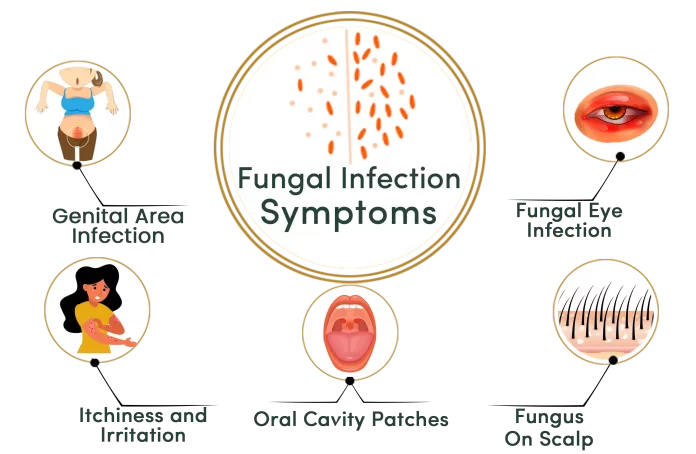Mycoses, another name for fungal infections, are caused by fungi that can infect the skin, nails, hair, and internal organs, among other parts of the body. Many fungi are benign, but others can infect humans. Fungi are a common type of microbe in the environment.
Symptoms of Fungal Infections
Skin Infections
- Redness
- Itching or burning sensation
- Scaling or flaking of the skin
- Raised, circular rash with defined edges (in the case of ringworm)
- Blisters or oozing (in severe cases)
Nail Infections (Onychomycosis):
- Thickened, discolored nails (yellowish-brown or white)
- Brittle or crumbly nails
- Distorted nail shape
- Nail separation from the nail bed
Fungal Pneumonia
- Fever
- Cough, sometimes with mucus or blood
- Shortness of breath
- Chest pain
- Fatigue
- Confusion (especially in older adults)
Treatment of Fungal Infections:
- Treating fungal infections: Skin infections treated with topical antifungal creams, ointments, or sprays.Oral antifungal drugs for more serious or systemic infections, such as terbinafine, itraconazole, or fluconazole.
shampoos with antifungal properties (like ketoconazole shampoo) for treating scalp fungus infections. - Nail Treatments:For mild cases, use antifungal nail paint or lotions.
oral antifungal drugs for chronic or more serious nail infections. - Fungal Pneumonia: Antifungal drugs are usually administered orally or intravenously, based on the patient’s general health and the extent of the infection.
In order to treat symptoms including fever, coughing, and breathing difficulties, supportive treatment may be given.





























